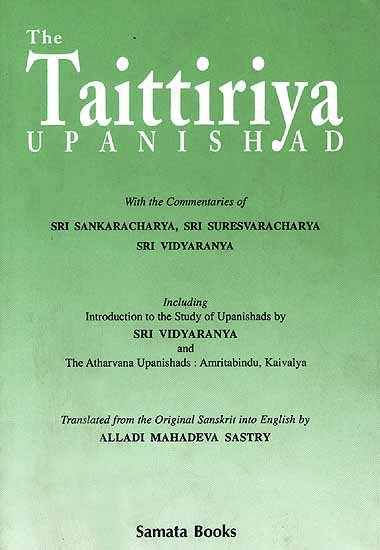Taittiriya Upanishad Bhashya Vartika
by R. Balasubramanian | 151,292 words | ISBN-10: 8185208115 | ISBN-13: 9788185208114
The English translation of Sureshvara’s Taittiriya Vartika, which is a commentary on Shankara’s Bhashya on the Taittiriya Upanishad. Taittiriya Vartika contains a further explanation of the words of Shankara-Acharya, the famous commentator who wrote many texts belonging to Advaita-Vedanta. Sureshvaracharya was his direct disciple and lived in the 9...
Verse 2.266-267
Sanskrit text and transliteration:
वैशब्देनैव संस्मार्य दवीयोदेशवर्तिनम् ॥ २६६ ॥
तस्माच्छब्देन वैराजमादायाध्यात्मरूपिणः ।
एतस्मादितिशब्देन वैराजत्वं प्रबोध्यते ॥ २६७ ॥
vaiśabdenaiva saṃsmārya davīyodeśavartinam || 266 ||
tasmācchabdena vairājamādāyādhyātmarūpiṇaḥ |
etasmāditiśabdena vairājatvaṃ prabodhyate || 267 ||
English translation of verse 2.266-267:
Referring to the nature of the Virāj, which is farther away, by the word tasmāt, and recalling to memory (the Virāj) by the particle vai, śruti teaches that the individual being is of the nature of the Virāj by the word etasmāt.
Notes:
The meanings of the three words tasmāt (than that), vai (verily), and etasmāt (than this) which occur in the śruti text tasmādvā etasmādannarasamayāt are explained in these two verses. By the word tasmāt is conveyed the Virāj, the cosmic being which is manifested as food or the gross physical matter. Being external to the individual, it is thought of as what is remote, what is farther away. The particle vai is used to help us recollect in our memory that cosmic being which has been described above. The word etasmāt denotes the individual physical being which is immediate and which is a modification of the cosmic being. The two words tasmāt and etasmāt are put in co-ordinate relation. The text, therefore, conveys the idea that the human being, a product of food (annamaya) at the individual level is identical with the anna or the Virāj, the cosmic being (kāryabhūto'nnarasamayakośo virājaḥ kāraṇādabhinna iti tātparyam.).
